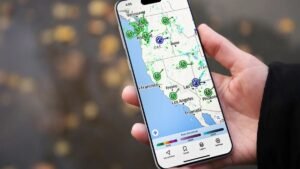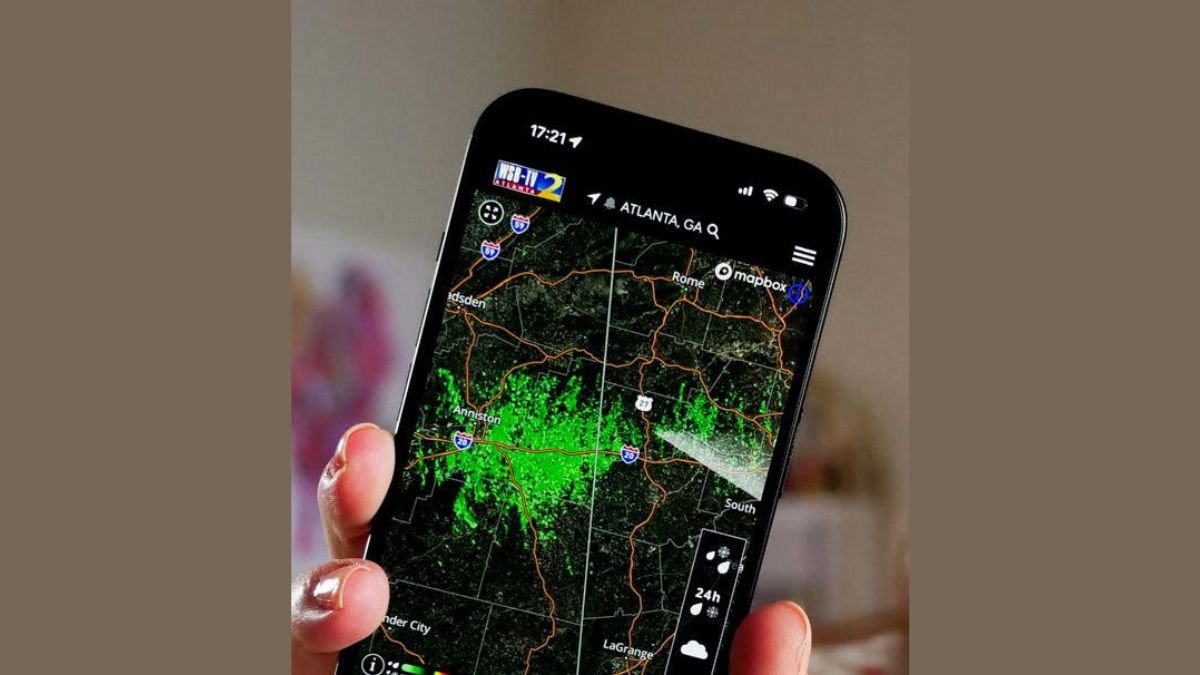Leveraging Smartphones and Social Media for Weather Awareness During Major Storms
In an era defined by rapid technological advancement, staying informed about severe weather has become significantly easier and more effective. With the increasing frequency of major storms and unpredictable weather patterns, understanding how to utilize your smartphone and social media can be a game-changer for safety and preparedness. This article explores various strategies to help you stay weather-aware, making use of the tools at your disposal.(Toogoodonline)

The Importance of Weather Awareness
Being aware of impending weather conditions is crucial for safety. Major storms can bring heavy rain, strong winds, tornadoes, and other dangerous phenomena. Early awareness allows individuals to take necessary precautions, seek shelter, and prepare adequately. With the right tools and strategies, you can enhance your ability to stay informed and protect yourself and your loved ones.
Emergency Notifications: A Lifeline for Safety
One of the most powerful features of modern smartphones is the ability to receive emergency alerts. These notifications can be life-saving, providing real-time information about severe weather threats.
1. Activating Emergency Alerts
Most smartphones come with built-in emergency alert systems. Here’s how to ensure you receive these critical notifications:
Check Your Settings: Go to your phone’s settings and locate the emergency alerts section.
- Check Your Settings: Go to your phone’s settings and locate the emergency alerts section.
- Opt-In for Wireless Emergency Alerts (WEA): This feature sends alerts about severe weather, local emergencies, and Amber Alerts. Ensure it’s activated for immediate updates.
2. Downloading Reliable Weather Apps
While emergency alerts are essential, weather apps can provide a wealth of information beyond alerts. Consider the following:
- Choose Reputable Apps: Apps like The Weather Channel, AccuWeather, and NOAA Weather Radar offer comprehensive forecasts, radar images, and alerts tailored to your location.
- Set Custom Alerts: Many weather apps allow you to set personalized notifications for various weather conditions, such as thunderstorms or tornadoes.
Local News Outlets: A Trusted Resource
In addition to smartphone notifications, local news outlets are vital sources of real-time weather information. Here’s how to effectively engage with them:

1.Follow Local Stations on Social Media
Most local news stations maintain active social media accounts, providing timely updates during severe weather. To stay informed:
- Like and Follow: Follow local news stations on platforms like Twitter, Facebook, and Instagram. They often share live updates and crucial information during storms.
- Engage with Content: Participate in discussions and share information to help spread awareness among your community.
2. Watch Live Weather Coverage
During severe weather events, local news channels often provide live coverage, including radar updates and expert commentary. Make use of these resources:
- Access Live Streams: Many stations offer live streaming on their websites or through apps. Tune in for up-to-the-minute information about ongoing storms.
- Check for Interactive Maps: Some channels provide interactive weather maps that allow you to visualize storm paths and affected areas.
Harnessing Social Media for Real-Time Updates
Social media platforms are not just for socializing; they can also be powerful tools for weather awareness. Here’s how to maximize their potential:
1. Follow Meteorologists and Weather Experts
Many meteorologists actively share weather updates on social media. By following them, you can gain insights from knowledgeable professionals:
- Find Trusted Meteorologists: Search for and follow meteorologists known for their accurate forecasts. Twitter is particularly popular for real-time updates.
- Engage with Content: Don’t hesitate to ask questions or seek clarification on weather-related topics. Meteorologists often appreciate engaging with their audience.

2.Join Community Groups
Social media also allows for local community engagement. Here’s how to use it effectively:
- Participate in Local Groups: Join community groups on Facebook or Nextdoor where residents share information about weather conditions and resources during storms.
- Share Your Experiences: Contribute to discussions by sharing your observations or updates, helping to keep others informed.
3.Use Relevant Hashtags
During severe weather events, hashtags can help you find and share information quickly. Consider these strategies:(Toogoodonline)
- Search for Storm-Related Hashtags: Look for hashtags like #StormWatch, #WeatherAlert, or #SevereWeather to access real-time updates and community discussions.
- Create Awareness with Your Own Posts: If you encounter severe weather, consider posting updates using these hashtags to inform others in your area.
Preparing for Major Storms: More Than Just Awareness
Staying informed is only part of the equation; preparation is equally important. Here are steps you can take to ensure you’re ready for major storms:
1.Create an Emergency Kit
Having an emergency kit can make a significant difference in a crisis. Here’s what to include:
- Basic Supplies: Stock up on water, non-perishable food items, batteries, and a first-aid kit. Aim for supplies that can sustain your household for at least three days.
- Personal Documents: Keep copies of important documents, such as IDs, insurance policies, and medical records in a waterproof container.
2. Develop a Family Emergency Plan
It’s crucial to have a plan in place before storms strike. Here’s how to create one:
- Identify Safe Locations: Discuss and identify safe spaces within your home or community where you can seek shelter during severe weather.
- Establish Communication Protocols: Make sure everyone knows how to reach each other in case you’re separated. Designate a meeting spot outside your home if needed.
3. Stay Informed About Your Area’s Risks
Different regions face different weather threats. Understanding your local risks can help you prepare better:
- Research Local Weather Patterns: Familiarize yourself with the common types of severe weather your area experiences, such as hurricanes, tornadoes, or floods.
- Know Your Emergency Services: Identify local resources, such as shelters, emergency services, and community response teams, so you can access help quickly if needed.

Conclusion: Empowering Yourself with Technology
In conclusion, the integration of technology into our daily lives has provided us with unprecedented access to information, especially when it comes to severe weather awareness. By utilizing your smartphone and social media, you can stay informed, engaged, and prepared for major storms.(Toogoodonline)
Taking proactive steps—such as enabling emergency alerts, following trusted local news sources, and connecting with meteorologists—will empower you to make informed decisions during critical situations. Remember, awareness is just the first step; preparation is key to ensuring your safety and that of your loved ones.
FAQs
Q1. How can I enable emergency weather alerts on my smartphone?
Ans: You can enable emergency alerts in your phone’s settings under the “Notifications” or Emergency Alerts section. Ensure that “Severe Weather Alerts” is turned on.
Q2. What are some reliable weather apps I should consider?
Ans: Popular and reliable weather apps include The Weather Channel, AccuWeather, NOAA Weather Radar, and Weather Underground. These apps provide forecasts, radar images, and alerts.
Q3. How do I know if a storm is coming?
Ans: You can stay informed by checking weather apps, following local news stations on social media, and enabling emergency notifications on your smartphone.
Q4. What should I include in my emergency kit?
Ans: Your emergency kit should contain water, non-perishable food, a flashlight, batteries, a first-aid kit, important documents, and any necessary medications.
Q5. How can social media help during a storm?
Ans: Social media platforms can provide real-time updates from local news outlets, meteorologists, and community members. You can also share your observations and resources with others.
Q6. What are the best social media platforms for weather updates?
Ans: Twitter and Facebook are excellent platforms for following meteorologists and local news stations. Many news outlets provide live updates and engage with their audiences on these platforms.
Q7. How can I find local community resources during a storm?
Ans: Joining local community groups on Facebook or Nextdoor can help you connect with neighbors and share information about shelters, emergency services, and recovery efforts.
Q8. What should I do if I lose power during a storm?
Ans: If you lose power, use a flashlight instead of candles for safety. Keep your phone charged using a portable charger, and check weather apps or social media for updates.
Q9. How can I prepare my family for a major storm?
Ans: Discuss and create an emergency plan that includes safe locations, communication methods, and tasks for each family member. Practice the plan regularly.
Q10. What steps should I take after a storm passes?
Ans: After the storm, check local news for recovery updates, stay connected with community groups for resources, and report any damage to local authorities.
Thanks for reading
Have you enjoyed this article? Spread the word! We’re eager to hear your comments on future mobile topics!

1 thought on “Stay Safe: Use Your Phone for Weather Alerts”